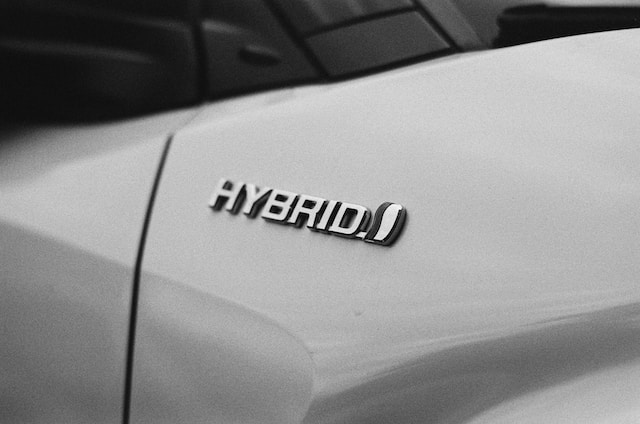Hybrid powertrain systems have emerged as a key technology in the automotive industry offering a compelling solution to address the challenges of environmental sustainability and fuel efficiency. With continuous advancements in hybrid technology the future of sustainable mobility is being shaped by innovative powertrain systems that combine the benefits of internal combustion engines and electric motors. In this article we delve into the exciting advancements in hybrid powertrain systems and their role in driving the future of sustainable mobility.
The Evolution of Hybrid Powertrain Systems
Hybrid powertrain systems have come a long way since their inception. The early hybrid vehicles featured a combination of an internal combustion engine and an electric motor working together to optimize fuel consumption and reduce emissions. However recent advancements in technology have significantly enhanced the performance efficiency and versatility of hybrid powertrains.
Full Hybrid vs. Mild Hybrid Systems
Two primary types of hybrid powertrain systems exist: full hybrid and mild hybrid systems. Full hybrid systems also known as parallel hybrid systems allow the vehicle to operate on electric power alone combustion engine power or a combination of both. On the other hand mild hybrid systems primarily support the combustion engine by providing additional power during acceleration and regenerating energy during deceleration.
Advantages of Hybrid Powertrain Systems
Hybrid powertrain systems offer numerous advantages that contribute to their growing popularity in the automotive industry. Some key benefits include:
1. Improved Fuel Efficiency
One of the primary advantages of hybrid powertrain systems is their ability to significantly improve fuel efficiency. By utilizing electric motors and regenerative braking hybrid vehicles can reduce reliance on the combustion engine leading to lower fuel consumption and reduced emissions. This is especially beneficial in stop-and-go city driving conditions.
2. Reduced Emissions
Hybrid powertrain systems help to reduce greenhouse gas emissions and pollutants. The electric motor assists the combustion engine resulting in a more efficient use of fuel and lower emissions compared to conventional vehicles. This reduction in emissions contributes to a cleaner and healthier environment.
3. Enhanced Performance
Hybrid powertrains offer improved performance through a combination of the combustion engine and electric motor. The electric motor provides instant torque delivering quick acceleration and responsiveness. This results in a smoother and more enjoyable driving experience.
4. Regenerative Braking
Hybrid vehicles incorporate regenerative braking which allows the electric motor to generate electricity while decelerating or braking. This energy is stored in the battery and can be later used to power the vehicle reducing the load on the combustion engine and further improving fuel efficiency.
5. Flexibility and Range
Hybrid powertrain systems provide flexibility and extended range. The electric motor allows for short-distance electric-only driving ideal for urban commuting. When additional power is needed for longer journeys the combustion engine takes over ensuring a seamless transition and eliminating range anxiety associated with pure electric vehicles.
Advancements in Hybrid Technology
The automotive industry is continuously investing in research and development to further enhance hybrid powertrain systems. Some notable advancements include:
1. Lithium-ion Batteries
Advancements in battery technology have resulted in the adoption of more efficient and lightweight lithium-ion batteries. These batteries offer higher energy density allowing hybrid vehicles to achieve longer electric-only driving ranges and improved overall performance.
2. Electric Motor Integration
Automakers are placing a greater emphasis on electric motor integration within the powertrain system. This integration involves optimizing the electric motor’s size power output and placement to maximize efficiency and performance. The advancements in electric motor technology have resulted in smaller lighter and more powerful motors.
3. Power Electronics and Control Systems
Improved power electronics and control systems enable more precise control and management of power flow between the combustion engine electric motor and battery. These advancements enhance the overall efficiency and performance of hybrid powertrain systems ensuring seamless operation and optimal power distribution.
4. Regenerative Braking and Energy Recovery
Advancements in regenerative braking systems and energy recovery technologies have increased the efficiency of capturing and storing energy during deceleration. This energy can be utilized to power auxiliary systems or assist in acceleration further optimizing fuel consumption and reducing emissions.
5. Plug-In Hybrid Electric Vehicles (PHEVs)
Plug-in hybrid electric vehicles combine the benefits of hybrid powertrain systems with the ability to recharge the battery from an external power source. PHEVs offer extended electric-only driving ranges making them a viable option for those who desire both electric mobility and the flexibility of a combustion engine.
The Future of Hybrid Powertrain Systems
Hybrid powertrain systems are poised to play a crucial role in the future of sustainable mobility. With advancements in technology and increasing consumer demand for cleaner and more efficient vehicles automakers are investing heavily in hybrid powertrain development. The future holds promising possibilities including:
1. Increased Electric-Only Range
Continued advancements in battery technology will lead to hybrid vehicles with extended electric-only driving ranges. This will further reduce reliance on the combustion engine resulting in even lower emissions and improved fuel efficiency.
2. Integration with Renewable Energy Sources
Hybrid powertrain systems can be integrated with renewable energy sources such as solar and wind to power the electric motor. This integration will enhance the sustainability of hybrid vehicles and reduce their environmental impact.
3. Continued Optimization and Efficiency Gains
Automakers will continue to refine and optimize hybrid powertrain systems to maximize their efficiency and performance. This includes advancements in powertrain control algorithms aerodynamics and lightweight materials to further reduce fuel consumption and emissions.
4. Expansion of Hybrid Options
As hybrid technology becomes more prevalent consumers can expect to see a wider range of hybrid options across various vehicle segments. From compact cars to SUVs automakers will continue to expand their hybrid offerings providing consumers with more choices to suit their needs and preferences.
Conclusion
Advancements in hybrid powertrain systems are driving the future of sustainable mobility. With improved fuel efficiency reduced emissions enhanced performance and ongoing technological developments hybrid vehicles are becoming an increasingly attractive option for environmentally conscious consumers. As the automotive industry continues to innovate and invest in hybrid technology we can look forward to a future where sustainable transportation becomes the norm contributing to a cleaner and greener planet.

Hi, I’m Jodie! I’m a spain-Moroccan writer with a passion for imagination, adventures, magic and stories with heart.
Please don’t hesitate to contact me for any questions, suggestions, comments or feedback.

















Add comment